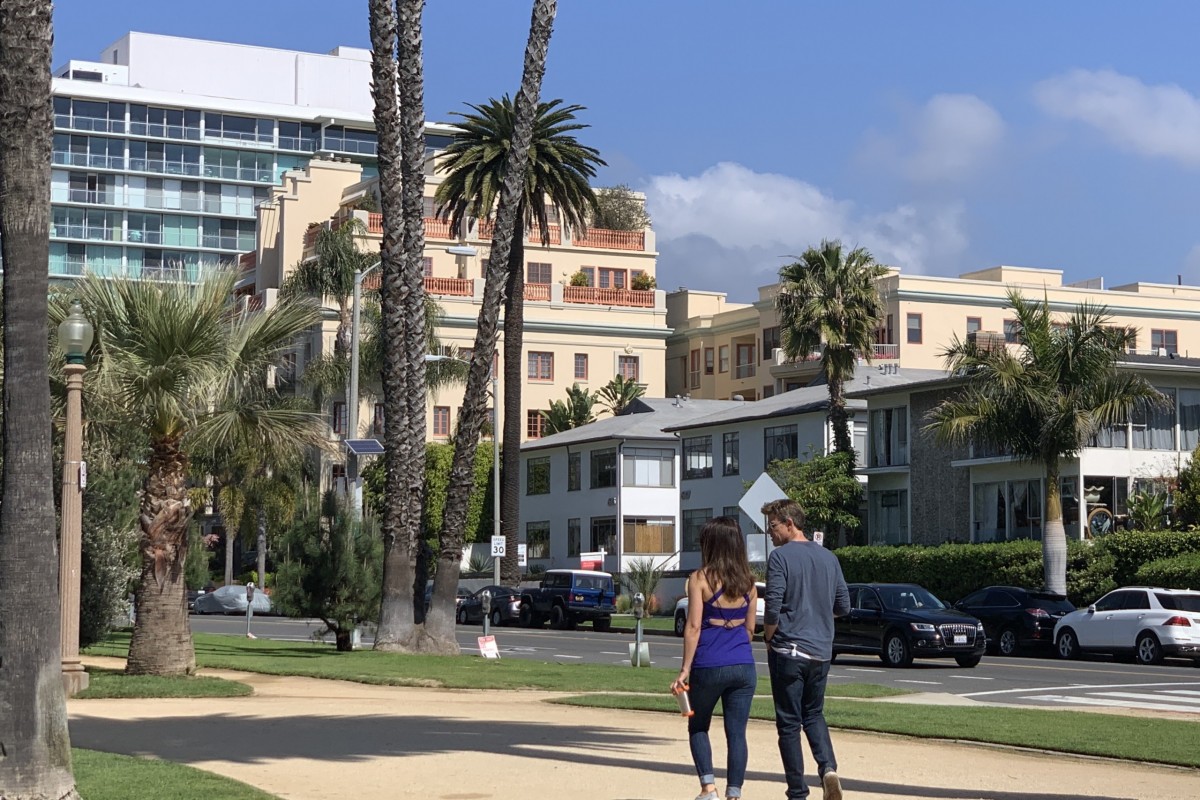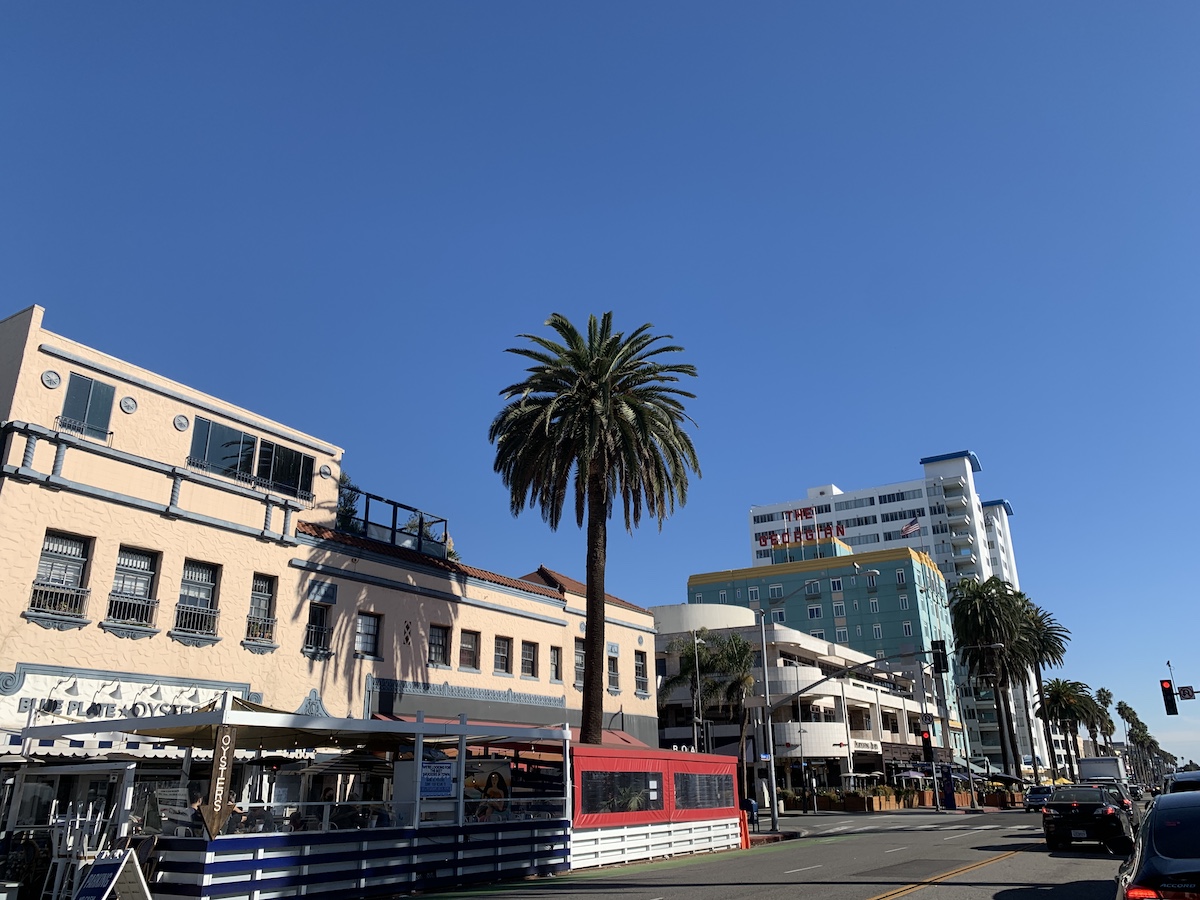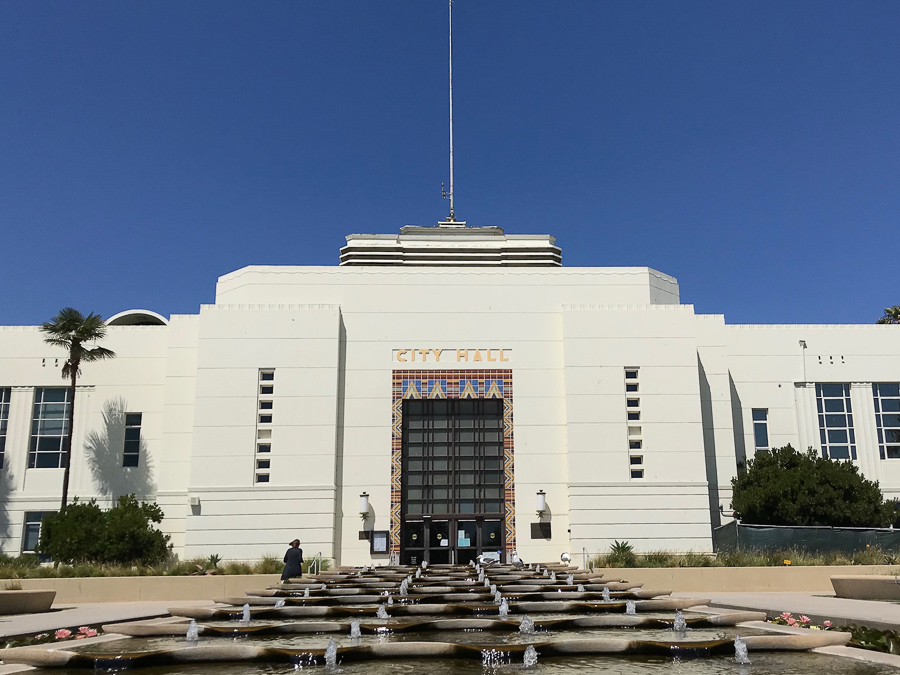Part 1 of 2

In this two-part article, we will discuss both the proposed transfer tax ballot initiative and the fundamental shift in city residential/commercial composition that will drive further emphasis on direct taxation of residents.
In this installment, we explore this proposed tax within the context of its role as a leading indicator of the fundamental restructuring of the city’s commercial and residential municipal revenue balance to fund the city’s ongoing, and growing, spending requirements.
The long-term implications of this commercial and residential rebalancing go far beyond this proposed ballot initiative. While it may impact every resident with various taxes and fees, it will especially impact single-family homeowners, as Part II will discuss.
The shift to homeowners is already underway. Ballot Measure SM in 2020 increased the Santa Monica share of transfer tax on real estate sales above $5 million by 100%, to $6 per $1,000. Then, in February, the finance department proposed placing another parcel tax on the 2022 ballot to fund libraries, which was a use to have been funded by Measure SM.
And, since the ballot is being qualified through a citizen signature petition, it only requires a simple majority (>50%) of votes cast to pass. Future changes would be relatively easy to implement on the same basis. Thus, lowering the current $8 million threshold over time to capture more revenues could occur.
What is the ballot initiative being proposed?
Consistent with a privately-funded initiative, paid signature gatherers are currently collecting signatures to place the titled “Funding for Homelessness Prevention, Affordable Housing, and Schools” onto the November 2022 ballot. This initiative – if it qualifies for the ballot and is supported by over 50% of the votes cast in November – would create the highest real estate transfer tax in the state for property sales from $8 million up to $25 million. It is over 8 times (800%) the current tax and over 10 times the city of Los Angeles’ rate.
This tax rate would be second only to San Francisco for transactions above $25 million. Currently, the sale of an $8M property in Santa Monica triggers $56,800 in transfer tax. If this initiative is passed, that tax would go up by $400,000 to $456,800, regardless of how long a property was held.
Part II of this article will discuss uses in more detail but the funding of affordable housing is a core stated use. This use creates financial deficits from the increased services and infrastructure costs, commercial revenue reductions outlined below, and lost property taxes if the 100% affordable projects are located on non-public land since such projects are largely exempt from property taxes.
There is no stated plan to quantify or cover these net new deficits in future city funding.
Affordable housing is necessary but it has a large regional component. The City has not asked or required the state to provide support for its mandates. While there have been months spent analyzing zoning unit capacity, there has been zero analysis about municipal financial capacity. The result is that no one can say how much we really need or can afford.
Affordable housing must be affordable to the city as well.
Why this kind of tax? City movement towards increasing direct taxation of residents, especially homeowners.
The imposition of such a significant non-commercial-based tax indicates a clear shift in policy. Why? Two reasons. First, the city has decided to implement, without challenge, the arbitrary State housing mandates that have no specified outcomes, other than to build to an assigned unit number. Second, the city has decided that locating the new housing on commercial land is something akin to a “free lunch” since it is not currently housing. Of course, it’s only a “free lunch” when the financial impacts are ignored.
To make matters worse, the city has inexplicably prioritized this commercial property repurposing in the especially high tax-generating visitor areas such as Downtown in general and the Promenade in particular. Following closely behind, with a separate set of issues, are commercial areas along transit routes (i.e., transit-oriented development – TOD).
Of course, this approach relies entirely on the non-acknowledgment, or outright denial, of the huge municipal financial opportunity costs involved in losing these low-city-cost revenue-generating commercial resources. Meanwhile, no evidence has been provided on the effectiveness, realizable benefits or relevance of TOD development in Santa Monica(a).
While not debated, this policy direction has been announced in at least two City Council meetings: the March 9, 2021 meeting item regarding approval for the Tesla Supercharging Station and again in the October 12, 2021 Council discussion of the Housing Element. In the latter meeting, while discussing housing, the mayor, who is also the private sponsor of this transfer tax initiative, asked “Can’t we just eliminate commercial (zoning)? Make it a disfavored use?” The question not asked…How much will this cost the city?
How is this shift from tax-generating commercial uses to residential housing being managed?
There is an absence of any economic analysis to assess the issues inherent in such a fundamental policy shift serve. This precludes any open discussion with all city stakeholders. Regardless, this policy shift is going straight through to implementation, entirely through incremental administrative and operational means:
- Elimination/conversion of commercial infrastructure (e.g., parking structures and lots) of which Parking Structure 3 is likely only the first city parking structure to go.
- Maintenance of failed homeless policies in the key downtown commercial areas, which continues to discourage entrepreneurs, creating storefront vacancies currently at a nominal 52%. The true rate is 64% when month-to-month pop-up rentals are excluded.
- Longstanding inattention to rising crime that surged 43% in Downtown alone between 2006 and 2019(b) and is arguably depressing rebound in visitor activity, reducing visitor sales tax receipts and risking hotel occupancy tax receipts.
- Complete absence of any meaningful business planning by the Downtown Santa Monica (DTSM) organization to provide conceptual revitalizing pivots for both the Promenade and downtown, despite managing a $10 million annual budget
- Incrementally shifting of tax burdens directly onto homeowning residents.
But aren’t the mixed-use formats of the new housing projects a commercial replacement?
New residential projects across the city are generally being approved on a “mixed use” basis with a ground floor commercial space. They are spread throughout the city and will likely be used to eventually replace the commercial-only facilities on the Promenade. These projects are also being subject to the latest land-use planning fad of providing less than one parking space per unit, if any parking is provided at all. The absence of parking does not mean the absence of cars, as was noted in this space in February. (a)
The unintended consequence is that even though new commercial square footage may be provided, the ingress/egress traffic congestion, distributed locations and haphazard business formats (e.g., tattoo parlors, potential pet stores, etc.) will limit sales to a fraction of what a properly managed, themed and branded visitor destination such as the Promenade, specifically, and downtown, generally, are highly capable of delivering. In some areas, the parking issues alone could render the spaces unusable.
Why does replacing Santa Monica’s commercial uses with housing impact tax revenues?
The replacement of commercial, especially retail, with housing has a uniquely multiplicative detrimental effect on city finances. The type of tourist/visitor retail that Santa Monica has spent decades developing is unique. It is a special type of high-volume scaled retail that derives from the city’s unique position as a tourist and visitor destination. Visits are enabled by critical, convenient and efficient commercial infrastructure such as adjacent parking in timelessly useful structures designed decades ago to encourage easy foot traffic access to all shopping areas. Combined, these factors have attracted tourists and visitors that spend far beyond what the basic resident base provides. And, since the commercial properties do not have residents, the tax revenues are generated at a very low cost to the city.
The key city commercial properties are the Promenade, SM Place and the surrounding downtown areas that benefit from the higher visitor spending levels. Based on historical data, it’s clear that properly managed and marketed, with downtown safety and sanitation issues resolved, these areas hold significant potential for much greater contributions to city finances. And given their flexibility, they can be focused on experiential business models that are highly resistant to online competition, requiring only competent professional planning and organization that should have been the purview of DTSM. Other successful retail venues in the Los Angeles area demonstrate this potential, despite the absence of our beautiful beach at their doorstep.
What are other cities doing?
The importance of having revenue-generating visitor volumes in a city can be gauged by comparing Santa Monica to New York City (NYC). In NYC, the commercial sector is in decline due to the emerging permanent effects of the pandemic-driven work-from-home shifts. The turnaround strategy now being recommended by real estate consulting firm HR&A (of which Santa Monica is a client) is to attract tourists and other visitors, who spend more than residents or office workers. The firm notes that “…the introduction of more residents in Midtown (is not going to be) to be a magic bullet.”(c)
Increasing municipal costs compound the impact of revenue loss
But all of the foregoing is only the revenue side of the equation. Replacing commercial with residential replaces direct revenues (e.g., parking structure fees) and indirect revenues (reduced visitors to retail establishments) with mounting infrastructure and services costs, amplifying the detrimental financial impact to the city.
Moreover, the new state under SB9 and SB10 legislation, the city (not the developer) is primarily responsible for all infrastructure upgrades from relevant residential projects. Replacing a mile of sewer or water line in Santa Monica costs $2.1 million.
Services have not been materially expanded in decades. The level of our sworn police force has not been materially increased in over 20 years. Crime in Downtown increased 43% from 2006 to 2019. Misuse of core fire and police resources in homeless management over the years has decreased overall force effectiveness. Only recently have temporarily-funded specialist pilot programs attempted to take the pressure off main services.
Does effective decommercialization make sense for Santa Monica? No, it does not.
While decommercialization may be an option for a location in the Rust Belt, it is entirely inexplicable for a city with significant current visitor volumes and the potential to meet and exceed prior historic levels with focused, professional and invested DTSM leadership.
Santa Monica has painstakingly built its globally-branded visitor destination profile over decades. Effective decommercialization, especially of the premier downtown retail district, is permanently eliminating the low-cost revenue generation opportunities the destination investment created. Visitor-generated tax revenues have been captured with the second-highest sales tax rate in the country among major cities, at 10.25%, which is only exceeded by Tacoma, WA at 10.30%.
Effective decommercialization holds the potential to destabilize city finances.
Analysis-free agenda-driven shifting of property use from commercial to housing will simultaneously reduce revenue generation capacity of an established low-municipal-cost activity and replace it with high-municipal cost residential uses (e.g., fire, police, water, sewer). These factors amplify the upward pressure on the direct taxation of residents.
If the shift from commercial to residential is allowed to occur without an understanding the implications, the already high cost of living in this city will escalate for all. And, if the residents decline, at some future date, to shoulder the inevitable requested tax increases, the cuts in services will grow deeper, accelerating the quality of life spiral we are currently facing.
Next week, we will explore the specific issues surrounding the proposed ballot proposition.
By Marc L. Verville for SMa.r.t. (Santa Monica Architects for a Responsible Tomorrow).
Thane Roberts, Architect, Robert H. Taylor AIA; Ron Goldman FAIA, Architect; Dan Jansenson, Architect, Building and Fire-Life Safety Commission; Samuel Tolkin Architect; Mario Fonda-Bonardi, AIA, Planning Commissioner; Marc L. Verville M.B.A., CPA (inactive); Michael Jolly, AIRCRE
References
(a) SMa.r.t. Column: Parking, Density and Inequality – Santa Monica Mirror 02-25-2022
(b) Impacts of California Proposition 47 on crime in Santa Monica, California
Institute For the Quantitative Study of Inclusion, Diversity, And Equity, Inc., 03-15-2021
https://osf.io/preprints/socarxiv/mc9wq/download
(c) “Midtown Manhattan With Fewer Office Workers: Imagining the Unthinkable”
Wall Street Journal, March 22, 2022













